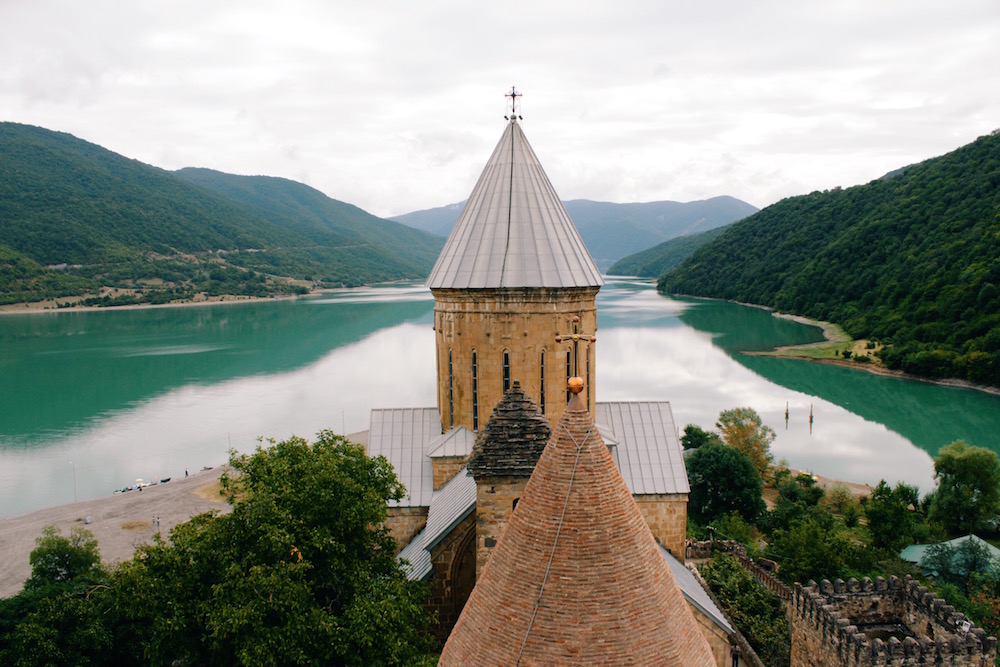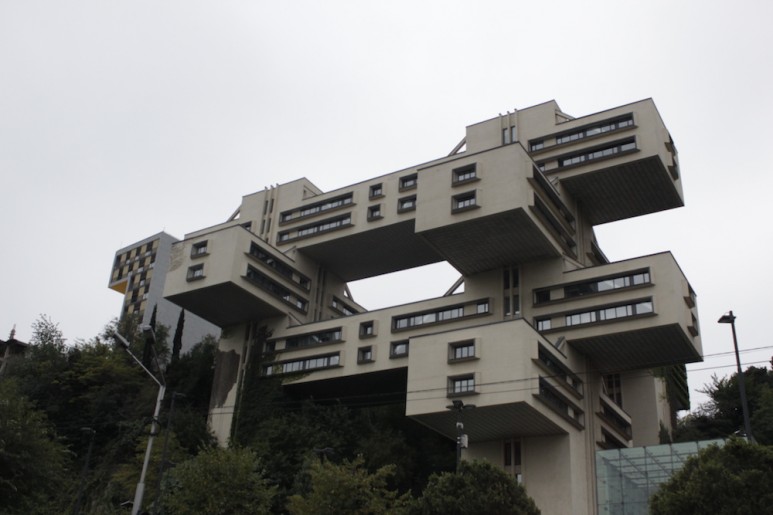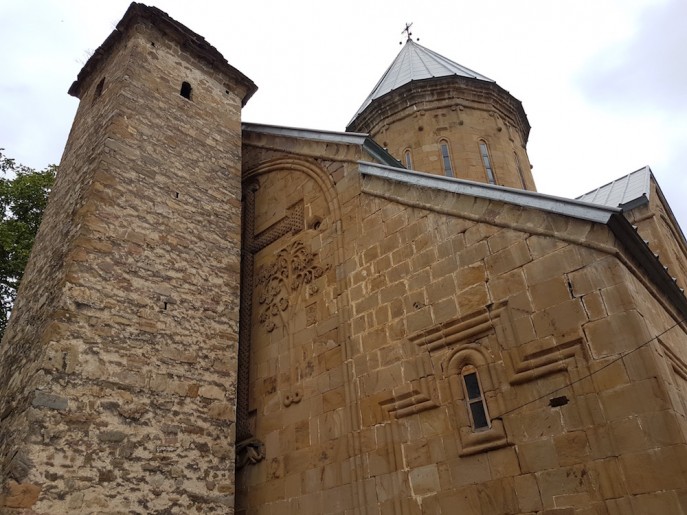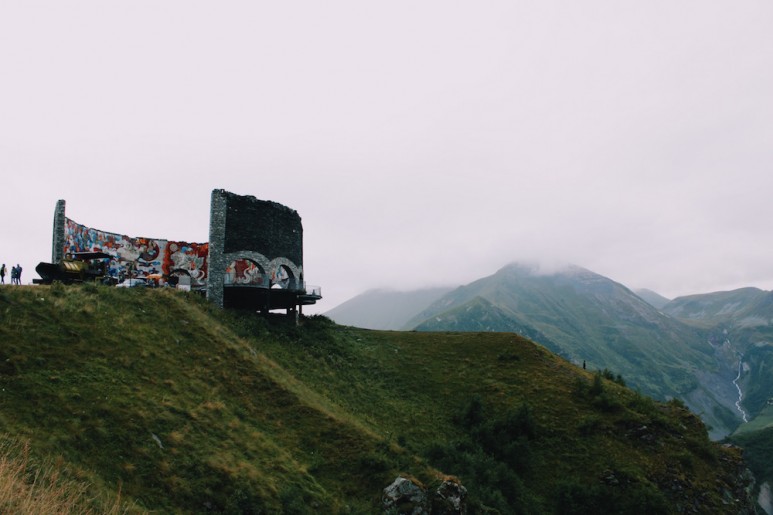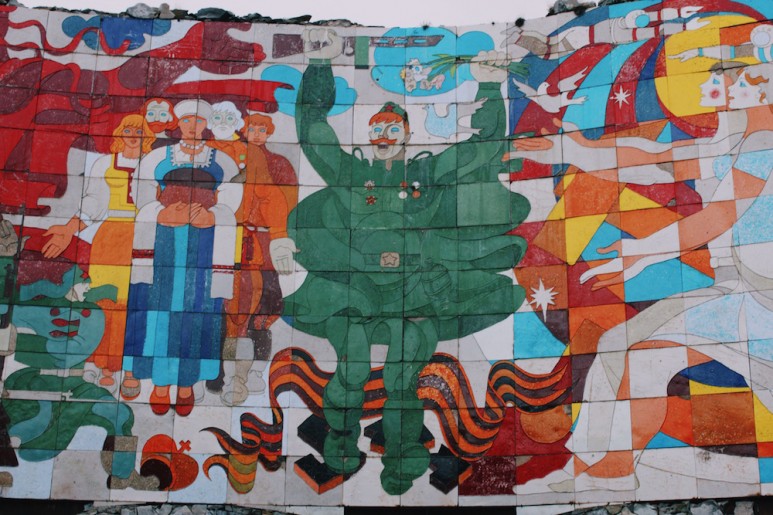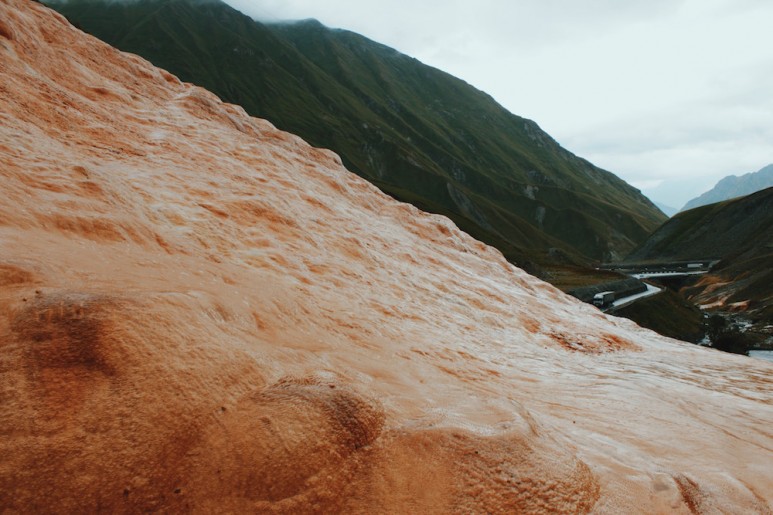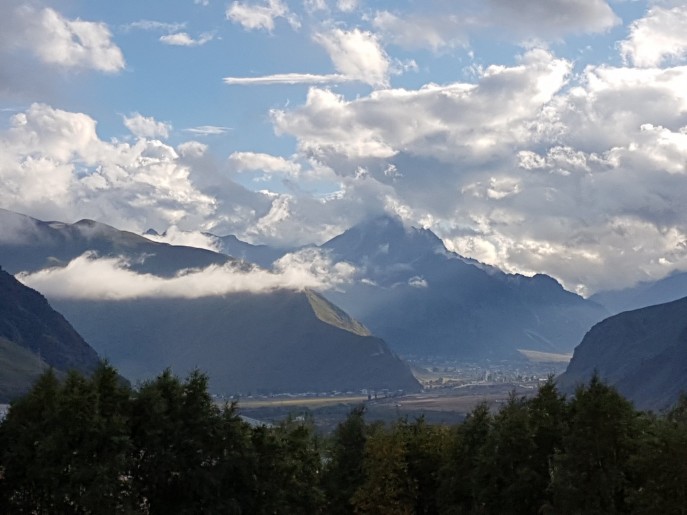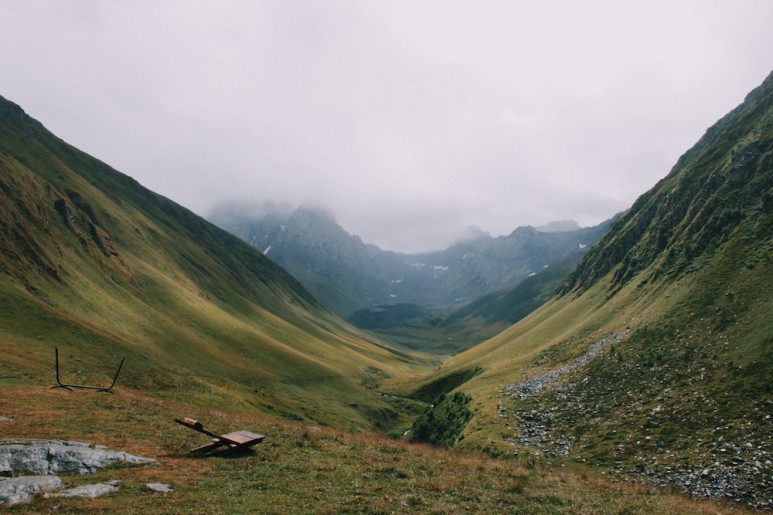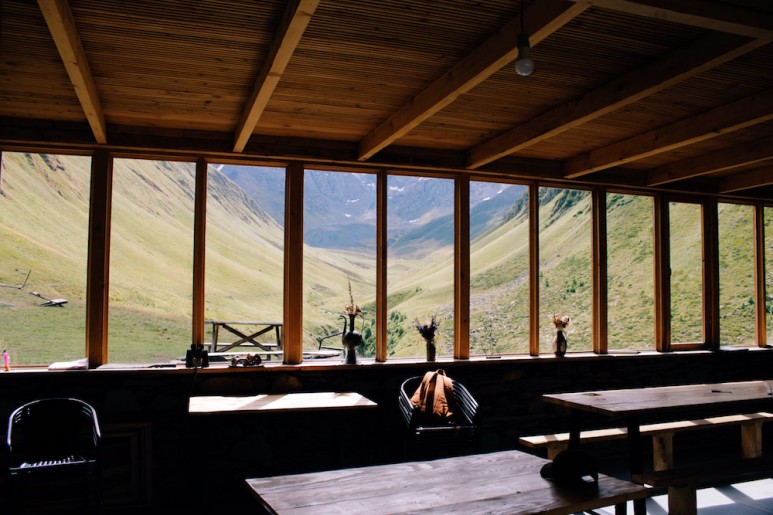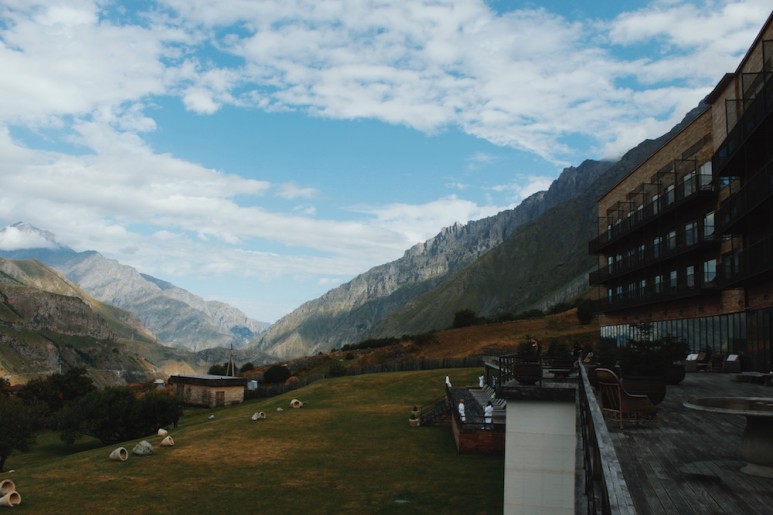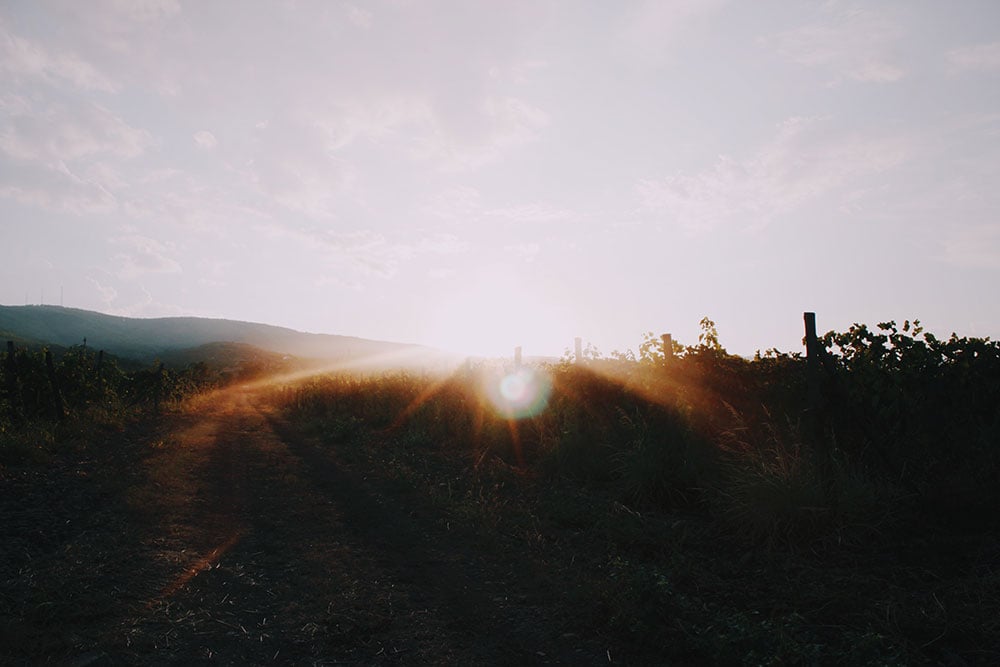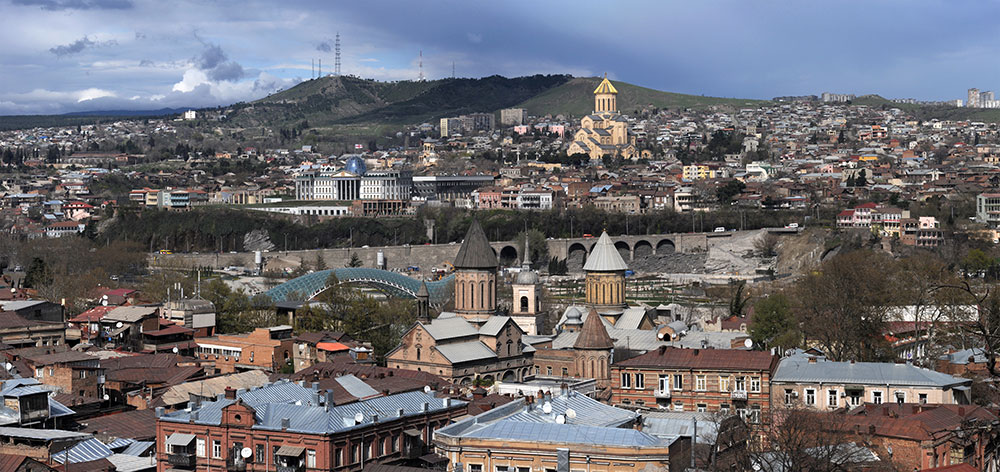Road trip: follow our inspirational journey through the Caucasus mountains to the top of the world
TblisiThe many newly-minted Georgiaphiles I’d met before visiting the country all seemed to come back raving about the same three things: the food, the people and the landscape. A few days of meeting and eating in Tbilisi was enough to convince me of the merits of the first two, but to really experience the third, we were going to have to head outside the city. Georgia’s topology is incredibly varied for such a small country, and with sub-tropical coastline, mountains and even desert all within a few hours’ drive of the capital, it was going to be hard to pick a road trip. But when the staff at Rooms Hotel, our base in Tbilisi, suggested we go and check out their sister establishment in the North Caucasus for a couple of days, the decision got a little easier. The next day we threw our bags into the back of a waiting BMW and headed into the mountains.
The cliffs set back from the road are dotted with hermits’ caves. We start to wind slowly through green hills carpeted with trees
The road north out of Tbilisi takes in some late Soviet architectural gems, including the gloriously barmy Ministry of Roads building, which looks something like a grounded space station designed by M C Escher. But soon after leaving the city you are reminded just how ancient a country this is. At nearby Mskheta, the old capital, the road passes between two of Georgia’s most important churches: down to our left, across the river, is the Svetitskhoveli Cathedral, the seat of the Georgian Patriarch, and high up on a hill to the right is Jvari monastery, built on the site where St Nino proclaimed Christianity here way back in 334 AD. Further on, the cliffs set back from the road are dotted with hermits’ caves. We start to wind slowly through green hills carpeted with trees.
We stop for a break at Ananuri, a castle complex set against the turquoise backdrop of the Zhinvali Reservoir. The castle was once the seat of the Dukes of Aragvi, a bloodthirsty bunch for whom eye-gouging and castration were standard practice in their feuds with neighbouring clans. To atone for their unholy behaviour they built two churches within the fortress walls: one, dating from the 17th century, was built barely two feet away from a pre-existing tower, making the beautifully intricate carving on its facing wall impossible for any mortal to see properly. But easily visible, of course, by the all-seeing eye of God.
Beyond Ananuri, the valley deepens and the road rises. We follow the course of the Aragvi River upstream until it splits in two at Pasanuri into the White and Black Aragvi, spotting the two distinctly coloured streams of water that meet at the confluence. Passing farmsteads and orchards with cows grazing freely by the roadside, we continue upwards as deciduous trees shade into pines and then the pines themselves begin to thin. It is only when we reach the ski resort of Gudauri, a collection of chalets set in alpine meadows, that I realise how high we have climbed.
At this point I feel a surge of excitement in my stomach. Beneath us in the valley — by now more of a chasm — there are clouds. The road clings ever tighter to the mountainside, avalanche tunnels lining the bends. We stop to admire the view at the Georgian-Russian Friendship Monument, a viewing platform built in 1983 for the bicentennial of the Treaty of Georgievsk. Although Russia may not have kept its side of the treaty, which brought Georgia under the “protection” of the Russian Empire, a late-Soviet mural is no place to get bogged down in the facts, and the colourful tiles depict Georgian and Russian partisans, farmers and knights coming together in happy co-operation.
There are clouds above us too, and the road is heading straight into them. Up ahead is the Cross Pass, which at 2379m above sea level marks the boundary between Europe and Asia. As we go over it, we enter the North Caucasus and a new watershed: from here the rivers flow north instead of south. Snaking downwards again we see what looks like an orange avalanche frozen onto the hillside. It’s a limestone formation caused by the natural mineral water flowing out of the mountains. Up close the brain-like structure of the rock gives it the feel of some Martian landscape.
Up here in this high valley, it feels like you have entered a different, more elemental kingdom, newly forged and untamed by man
Soon after, the breathtaking Terek Valley opens up before us. Mighty, green mountains on either side sweep down to the rushing river at the bottom, rocky crags jutting out into the valley at intervals. Anything on a human scale — strung-out villages, the occasional medieval tower — is dwarfed by this awesome panorama. Up here in this high valley, it feels like you have entered a different, more elemental kingdom, newly forged and untamed by man. This, after all, is where Prometheus was punished by the Gods for having the audacity to discover fire.
Arriving at Rooms Kazbegi, our hotel just outside the town of Stepantsminda, I am told that Mount Kazbek, or Kazbegi, the dormant volcano to which Prometheus was chained, is directly in front of us. Today the peak is shrouded in thick cloud, but even so my balcony gives out onto a spectacular view of the valley in either direction. Once a tourism base for Soviet government officials, the hotel was clad in wood and given a design-conscious overhaul to become the tour de force of chic minimalism that it is today. It would be easy to while away a couple of days on the terrace with a glass of wine but our ambition is to get out into the mountains and work off some of those Georgian khachapuris (cheesebreads) we ate in Tbilisi.
Gergeti Church, our afternoon objective, perches across the valley from the hotel on one of the foothills of Kazbegi. It’s an hour’s walk up a very steep path, but worth the effort to experience the mystery and seclusion of the church and the satisfaction of looking down on the now ant-sized hotel below. On the way back down we scramble through stands of pine trees as the weather starts to close in. We reach the town just as an almighty thunderstorm disgorges itself on our heads, and turn up in the lobby looking considerably less chic than our fellow guests. A dip in the indoor pool is in order before Georgian brandies in the bar — more potent than usual at this altitude — and dinner.
The next morning we meet our guide, Georgi, and head off in a van to nearby Juta. After half an hour’s drive on a treacherous road dodging potholes and vertiginous drops, we get out and start walking up a beautiful grassy valley, the fresh mountain air soon blowing away the cobwebs. Ahead of us looms the Chaukhi Massif, a shock of bare rock flung up at the valley’s end like a fistful of broken teeth. I think of those poor Romantic poets who were moved to sublime agitation by the sight of the Alps — if they’d seen this they’d have expired on the spot. The hike takes a few hours, and on the way back we stop at a guest house for homemade basil lemonade and a plate of kuserbo, a local dish made of grated potato, cheese and clarified butter — indulgent, energy-replenising, and doubly delicious when it feels like you’ve earned it.
On our last day I am in luck. Through my hotel room window I can make out the bald white dome of Kazbegi, imperious in the early morning mist. The mountain has given up its secrets at last.
